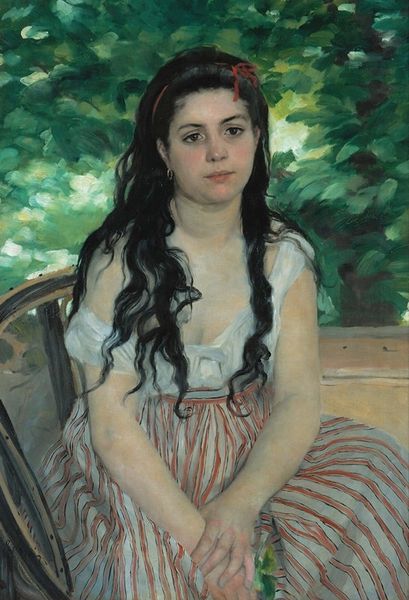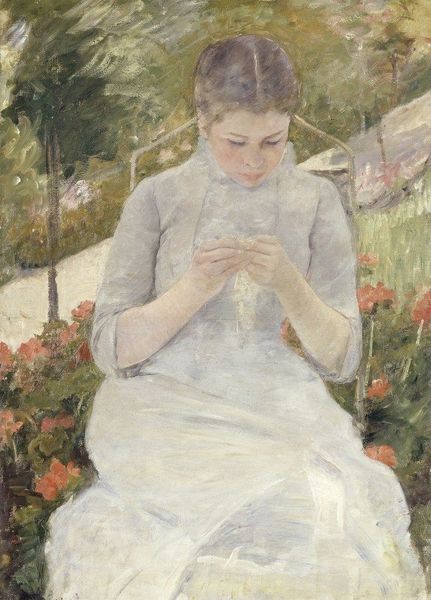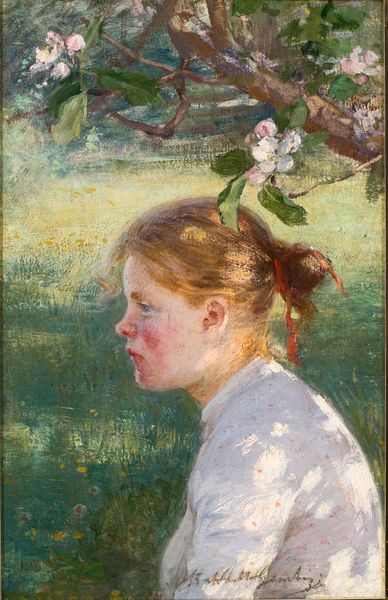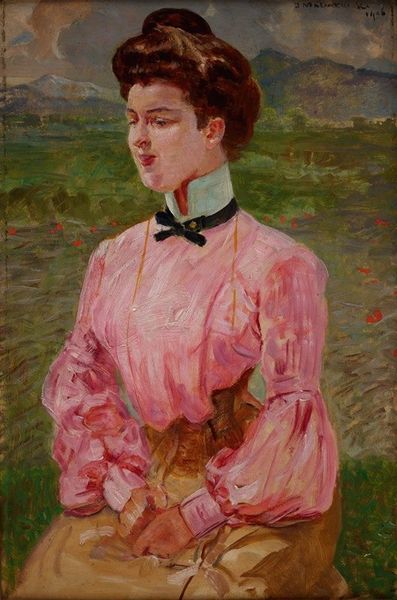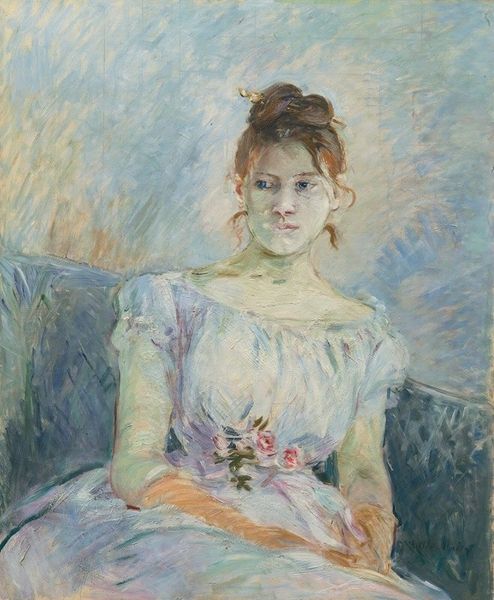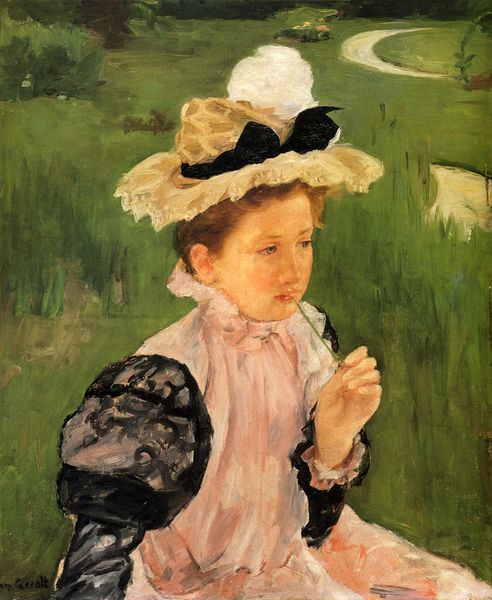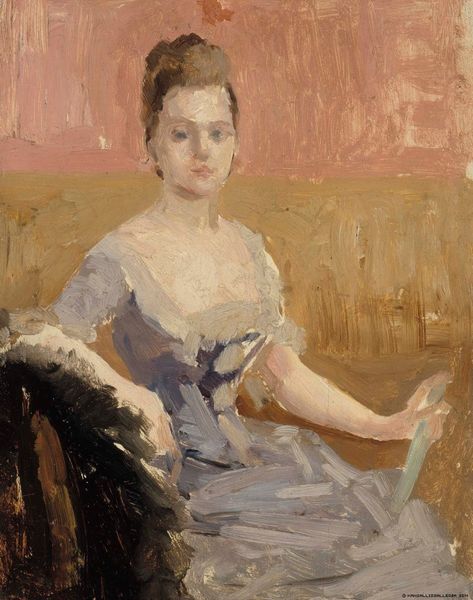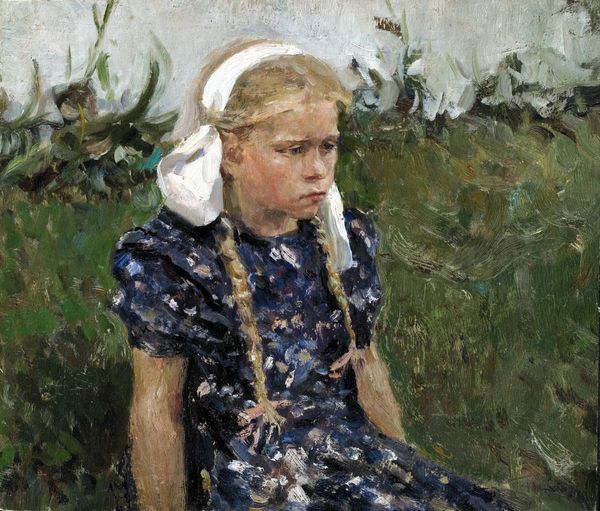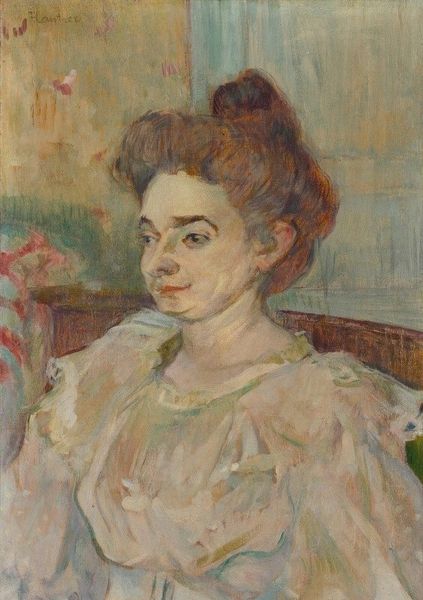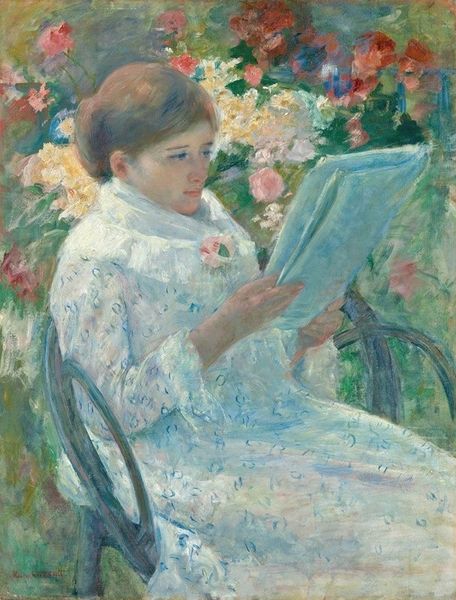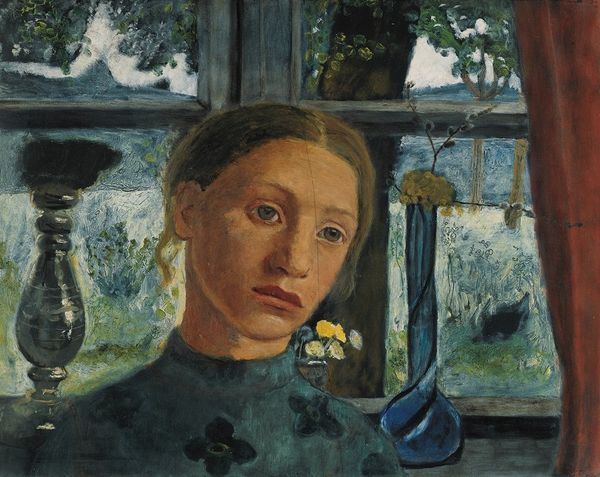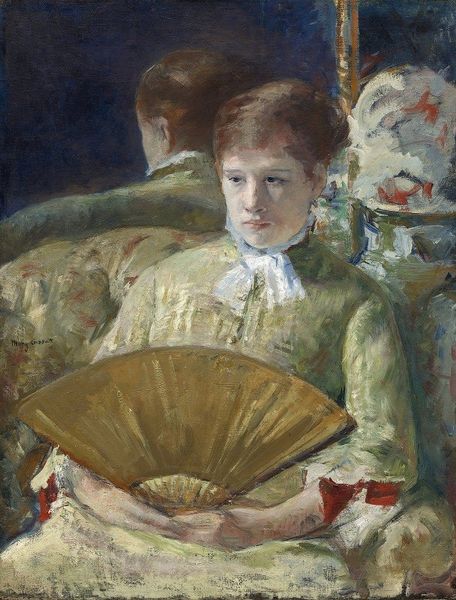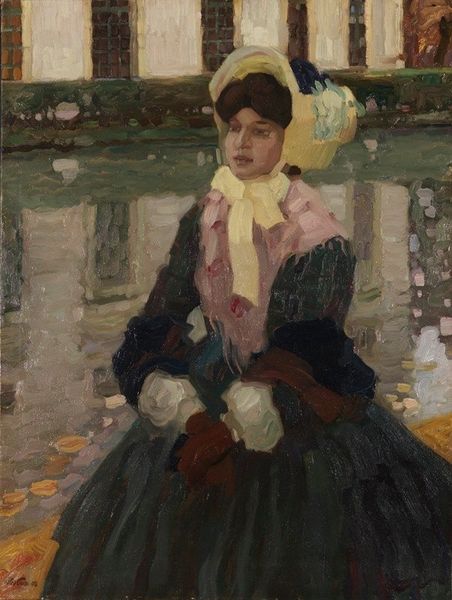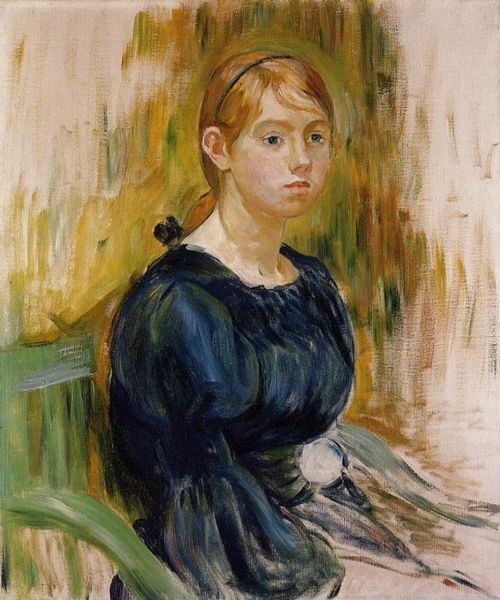
Copyright: Public Domain: Artvee
Curator: Let's discuss Mary Cassatt's "Woman with a Red Zinnia," an oil painting created in 1891. Editor: My initial impression is one of gentle melancholy. The woman’s downcast gaze, combined with the slightly muted colors, gives the piece a very subdued feeling, despite the bright splash of the zinnia. Curator: I agree, there’s a quietness to it. It’s a departure from some of Cassatt’s more domestic scenes. The subject's engagement with the flower can be considered an intentional visual language: her expression suggests introspection. Knowing Cassatt's biography, and the limitations placed on women artists of the time, I consider what social commentary can be delivered in these constraints? Editor: The way Cassatt handles the oil paint interests me. Look at how she’s applied the paint, particularly in the woman’s dress and the background, it's clearly Impressionistic, with broken brushstrokes creating texture and light. You can almost feel the weave of the fabric and the roughness of the park bench, it is a departure in a sense, it still emphasizes everyday subject matter through Cassatt's material translation, right? Curator: Precisely. The plein-air technique gives an immediacy, it's Cassatt absorbing new influences, painting contemporary life. But her choice of subject is what arrests me – an unidealized young woman in contemplation. It disrupts expectations. Editor: The choice of the red zinnia also strikes me. Such vibrant colors become significant to understanding Cassatt's artistic intention in conjunction to the muted landscape, right? Curator: It's impossible to divorce Cassatt’s identity as a woman artist in the late 19th century from her art. She consciously represents women's experiences, subverting dominant narratives about femininity. The act of depicting women in their own right was its own mode of rebellion. Editor: Definitely. For me, Cassatt's strength lies in transforming these raw materials – paint, canvas, the lived reality of women – into works of art that invite this close attention. She demonstrates how painting everyday scenes has historical value through a lens of social materiality, it encourages conversations about class, gender and labor during the era. Curator: Agreed. Analyzing art through its material construction can further inform broader critical lenses of cultural shifts throughout time. Editor: Indeed, it makes you appreciate the nuances, you know? The final pieces really are what bring these details together to enrich our interpretations and perspectives on it.
Comments
No comments
Be the first to comment and join the conversation on the ultimate creative platform.
